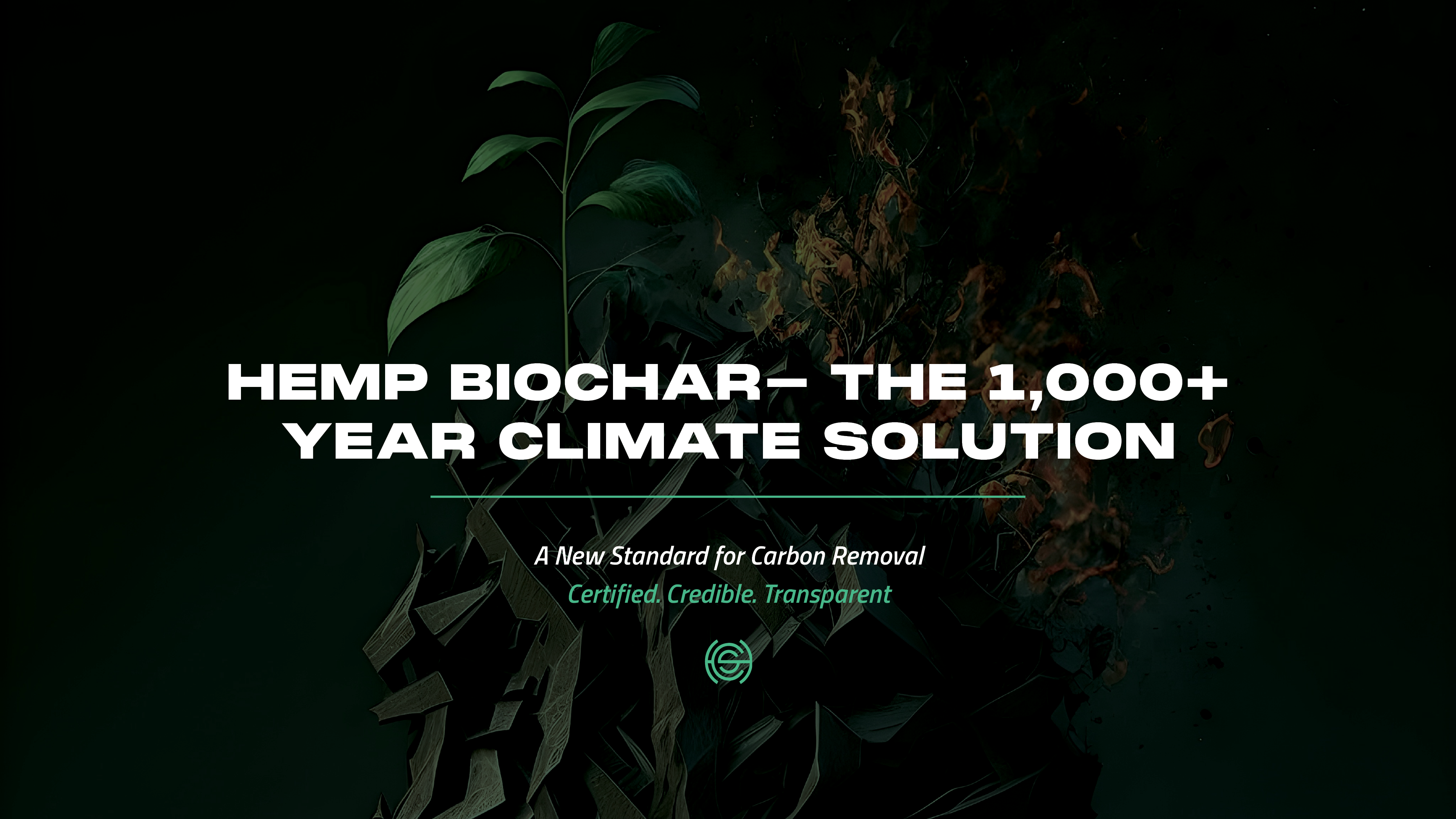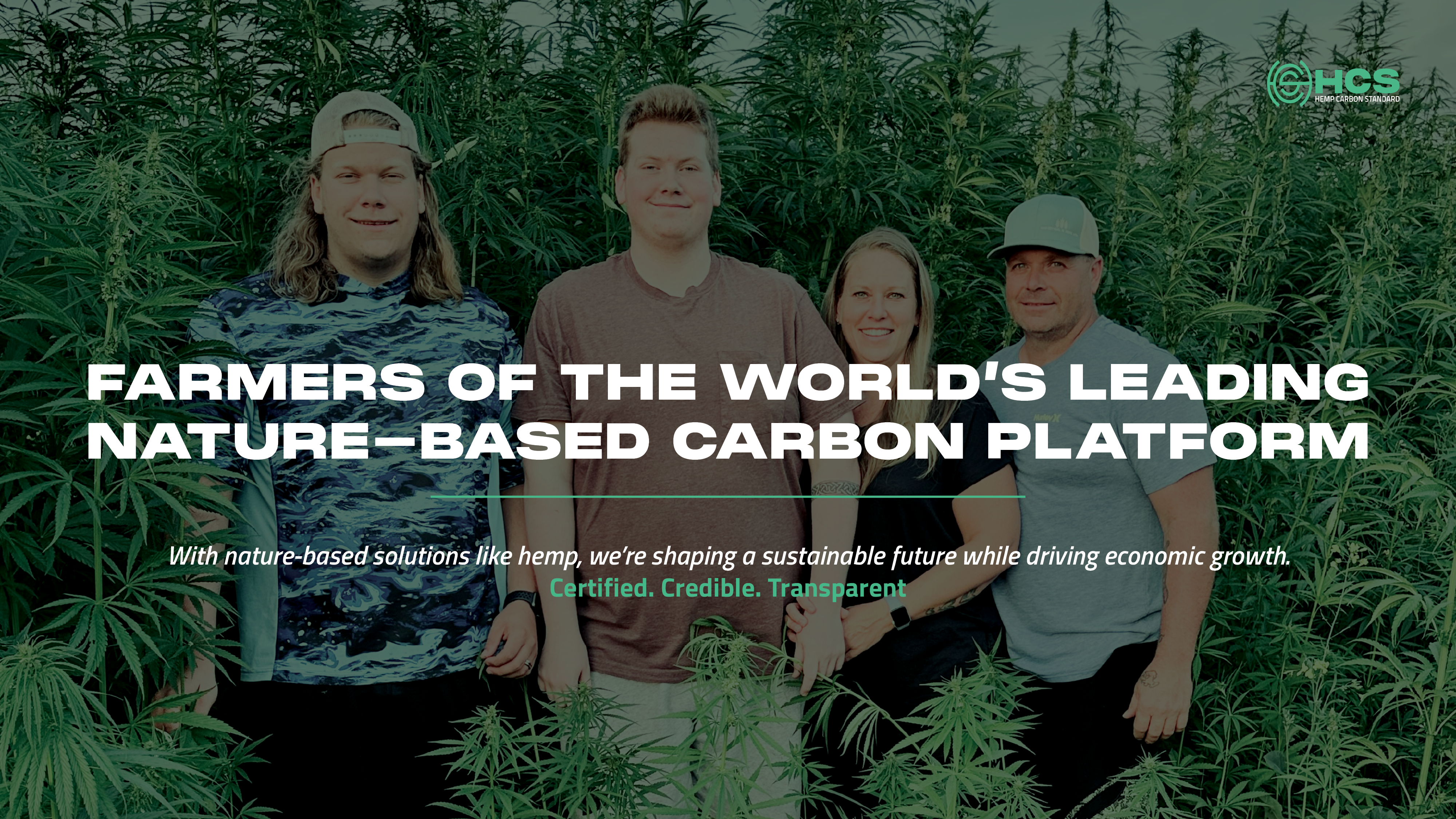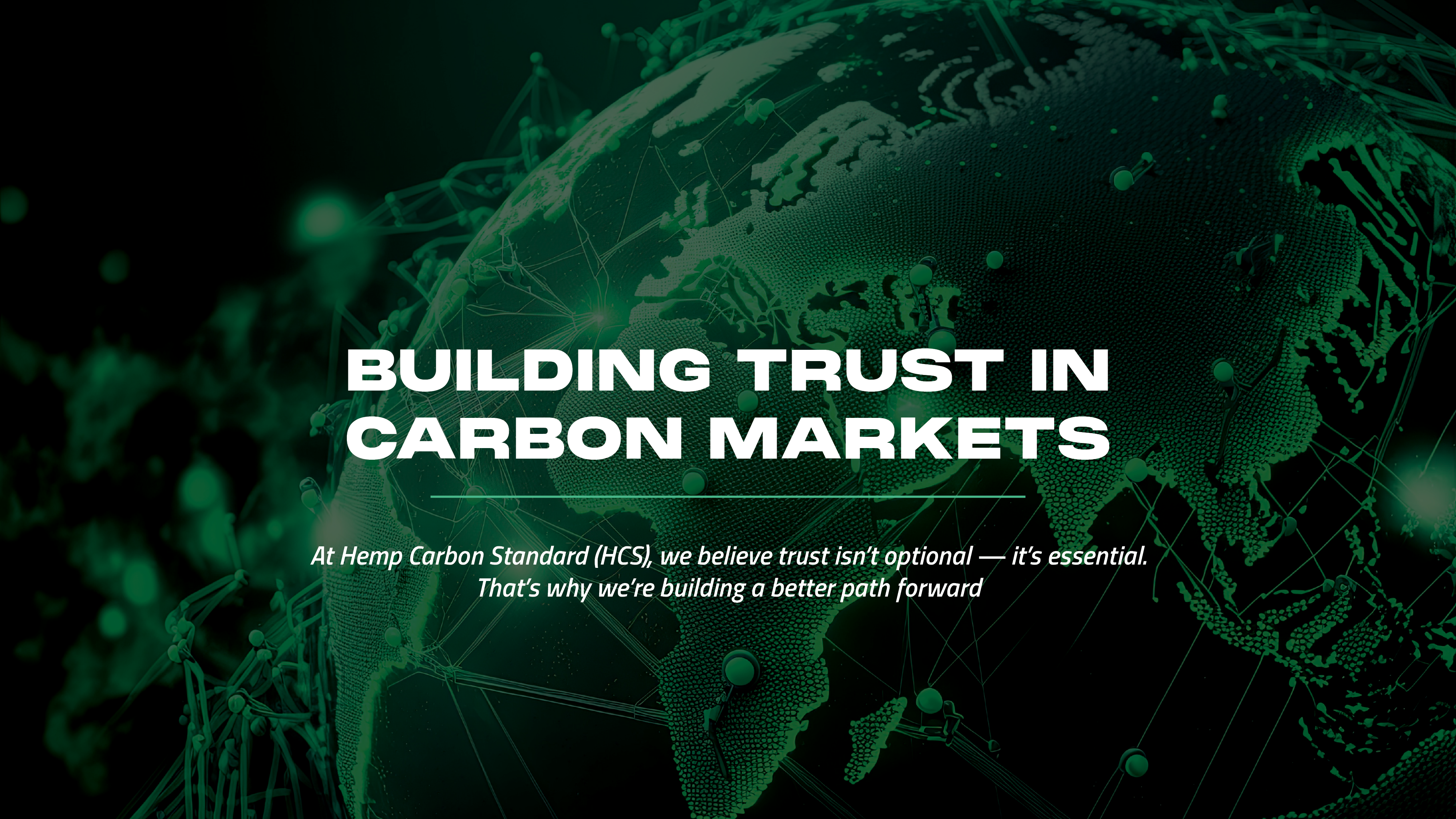Climate change remains one of the most critical challenges of our time, and for climate-conscious businesses, ESG investors, and sustainability professionals, the solutions we choose today will define our planet’s future. However, traditional carbon offset models are revealing significant flaws. Projects tied to forestry or soil carbon often fail to meet long-term goals due to reversals from events like wildfires or insufficient permanence.
This brings us to a turning point in the voluntary carbon market. The criteria for so-called “high-quality” carbon credits are being redefined, with durability, verifiability, and broader environmental benefits becoming essential. Hemp biochar emerges as a promising solution to these challenges, offering measurable, permanent carbon removal combined with co-benefits for ecosystems, local economies, and innovation.
This edition will take you through the case for hemp biochar, how it works, and why it’s fast becoming a preferred choice for businesses and investors aiming to make a meaningful climate impact.
🌱 The Case for Permanent Carbon Removal
When it comes to carbon removal, permanence is key. Many traditional offsets deliver only temporary benefits. For example:
- Forestation projects can be undone by natural disasters such as wildfires or logging.
- Agricultural soil programs may face reversals due to seasonal changes or disruptions from machinery.
Hemp biochar, on the other hand, offers the longevity needed for game-changing climate impact. Biochar is created by pyrolysis, a process that heats organic materials (like biomass) in a low-oxygen environment, turning them into a stable form of carbon. Unlike many other carbon offsets, the carbon stored in biochar is locked away in solid form for centuries, even millennia.
According to the Our Biochar Methodology (V1.2), hemp biochar’s resilience to decomposition ensures it meets the durability criteria for permanent carbon removal. Key factors contributing to its permanence include:
- Low hydrogen-to-carbon ratios make it highly resistant to microbial or chemical breakdown.
- Special application methods like burial or incorporation into materials, which prevent oxidation and enhance stability.
- Extensive scientific validation, such as studies from Lehmann & Joseph (2009) and Woolf et al. (2010).
By offering trusted, verifiable carbon storage, hemp biochar meets the “gold standard” increasingly demanded by international climate agreements and the private sector.
🔬 What Makes Hemp Biochar Unique?
Biochar can be made from various organic materials, but hemp stands out as an exceptional feedstock. Why? Industrial hemp is among the most regenerative crops in the world. It’s fast-growing, thrives in diverse climates, and its cultivation provides additional sustainability benefits.
Here’s what makes hemp biochar a standout solution:
- Carbon Sequestration
The process of converting hemp into biochar traps stable aromatic carbon structures that remain inert for centuries, preventing carbon re-release.
- Enhanced Soil Quality
When added to soil, hemp biochar boosts fertility by improving nutrient retention and water-holding capacity. This reduces the need for synthetic fertilizers.
- Environmental Remediation
Hemp biochar aids in pollutant adsorption and stabilizing soil pH, making it a key ally in land restoration efforts.
- Construction Applications
Hemp biochar finds use in producing hempcrete for sustainable construction. When incorporated into buildings, carbon remains locked away for the lifespan of the structure.
These multi-functional impacts mean hemp biochar isn’t just a climate solution. It regenerates ecosystems, provides economic opportunities for farmers, and promotes innovation in industries like construction and agriculture.
💰 From Offsets to CRUs for Verified Carbon Removal
The durability and impact of hemp biochar have led to the development of Carbon Removal Units (CRUs), a mechanism introduced under the Hemp Carbon Standard. CRUs represent one verified metric ton of CO₂ removed from the atmosphere. Unlike traditional offsets, CRUs go through rigorous standards before issuance:
- Sustainable Farming Practices: Ensuring hemp is grown using regenerative and environmentally friendly methods.
- Low-Emission Production: Monitoring biochar production to minimize GHG emissions.
- ISO-Aligned Quantification: Assessing carbon storage via Life Cycle Assessments (LCA).
- Verified Monitoring: Using independent third-party auditing for accuracy and transparency.
Hemp biochar CRUs are also traceable through unique registries, transparent with lifecycle impact calculations, and backed with insurance mechanisms to address reversal risks. These attributes make hemp biochar CRUs some of the most sought-after credits in the voluntary market, with prices exceeding $100 per tonne.
📈 Why Forward-Thinking Companies Are Adopting Hemp Biochar
For organizations with ambitious Net-Zero and ESG goals, temporary offsets are no longer sufficient. Hemp biochar CRUs outperform in terms of longevity, transparency, and co-benefits
Here’s how your organization can benefit:
- Stronger Brand Credibility: Traceable and permanent impact enhances your sustainability reporting and protects your reputation.
- Better Risk Mitigation: Avoid accusations of greenwashing or ineffective climate projects.
- Compliance-Driven Impact: Align with international reporting frameworks like the Voluntary Carbon Market Initiative (VCMI) or the Science-Based Targets initiative (SBTi).
- Positive Storytelling: Showcase innovation and leadership in adopting sustainable agricultural and construction practices.
Beyond serving as credits, hemp biochar CRUs signal to stakeholders that your business is investing in meaningful and lasting climate solutions.
🔗 Early Access to 2025 Projects
With interest in hemp biochar CRUs surging, now is the best time to secure early access. HCS-Hemp Carbon Standard is onboarding partners for its 2025 North American and European projects. These projects are set to generate tens of thousands of certified CO₂ removal credits, complete with geo-tagging, monitoring, reporting, and verification (MRV).
By getting involved today, corporate buyers and investors can:
- Lock in pricing before demand drives up costs.
- Participate in co-branded impact campaigns to foster consumer trust.
- Bolster local economies by supporting hemp farmers and bioeconomy infrastructure.
🛠 Act Now – Transition to High-Integrity Carbon Removal
The era of temporary offsets is coming to an end. Global climate pressure is increasing, and the fight against greenwashing is forcing companies to adopt higher-quality climate solutions.
By choosing hemp biochar CRUs, your business can lead the charge toward a cleaner, more sustainable future. This isn’t just an opportunity to reduce your carbon footprint; it’s a chance to invest in a solution that regenerates ecosystems, empowers communities, and delivers lasting climate impact.
📩 Schedule a call to explore hemp biochar CRUs for your sustainability goals.




